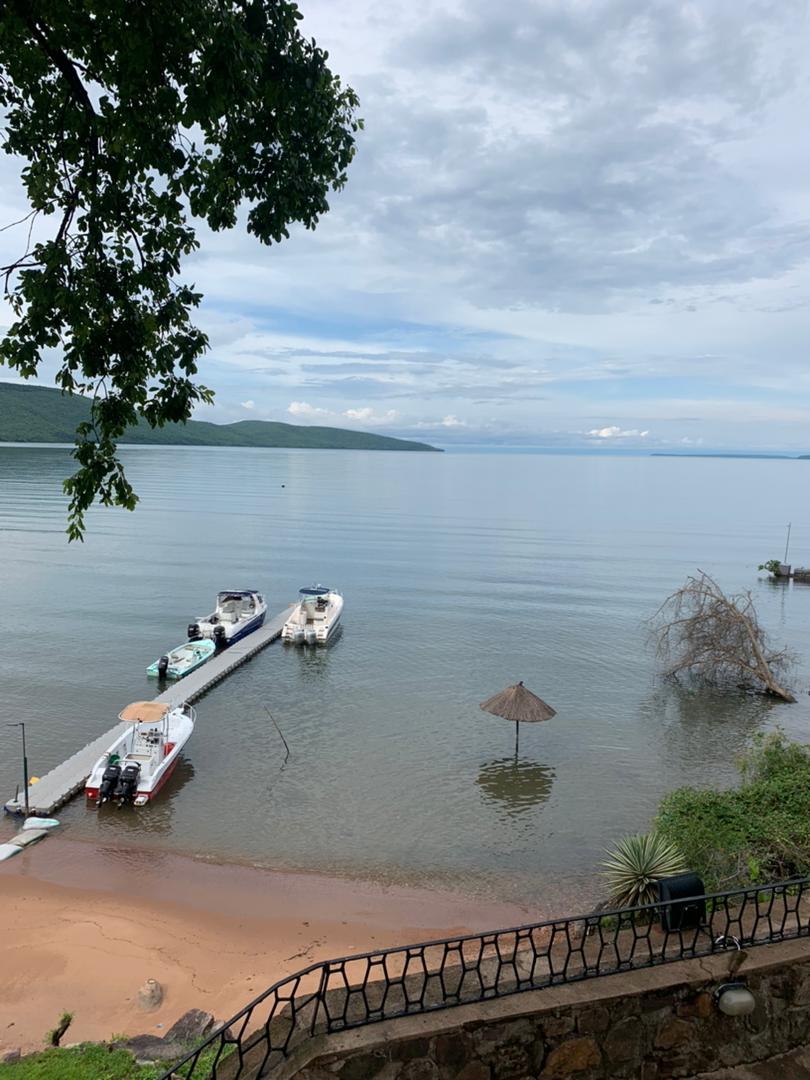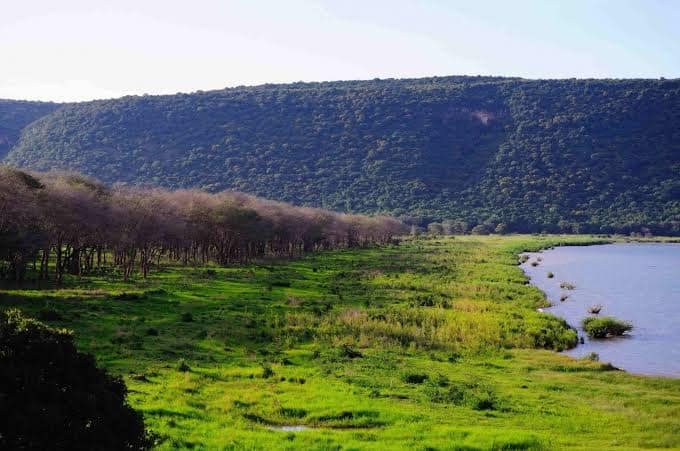Present day
There has been some refurbishment in recent years and game numbers are rising again. Frankfurt
Zoological Society Zambian partnered with DNPW in 2017 to form the Nsumbu Tanganyika Conservation Project, and
managed by Craig Zytkow, has grown considerably.
Accessing the park is best done via the Kasama - Mporokoso - Nsumbu
road. The road is tarred up to Mporokoso (170 km) and gravel thereafter (another 170 km). The gravel part has been
worked on since 2020.
The Tanganyika Angling Challenge takes place at Nkamba and Ndole Bay Lodges in March or April every year.
The land along Lake Tanganyika in recent history has often been neglected, the people just getting on with their lives
as much as they can. But this was not always the case. There have been times of excitement, of sadness and wonder for
the people who live along the lake shore.
The Tabwa, Mambwe and Lungu people migrated to the land from Central Africa in the 1700s. The Tabwa gained fame for
being salt producers; the Lungu and Mambwe both kept cattle and they all caught fish. Their lives were as quiet
pastoralists following their traditional beliefs of ancestor worship with sites along the shore of special significance.
But these quiet times came to an end when slave traders arrived from the east coast in the middle of the 1800s. Even
Tippu Tip, the infamous slave trader entered their land to capture the people. The villagers learned to fortify their
homes as much as possible by building stockades but they were still no match for the guns of the slave traders.
Some relief arrived with the first missionaries in 1885. The missionaries from the London Missionary Society were
following in the footsteps of David Livingstone who had visited the area in 1871 and had pleaded with the Society to
send in missionaries to help the people with legitimate trade, not the slave trade. The first missionary station was set
up on the lake at Niamkolo but they moved after a year to Fwambo. Niamkolo was to become Mpulungu; Fwambo was abandoned
later. The Mambwe and Lungu people flocked to the missionary stations for protection but they did not take kindly to
learning about the new religion. It took another 14 years before the slave trade finally ended with all the people, including
the missionaries, living in fear.
Peace came with British South African Company and the people could relax, spread out and get back to their farms. This
spreading out of the people disconcerted the owners of the British South Africa Company who had plans to start coffee
farming all around the lake. This plan, though, never happened as by 1914 the First World War broke out.
The First World War was against the Germans and the Germans controlled German East Africa (Tanganyika, then Tanzania).
Abercorn and Fife (Mbala and Nakonde ) which had become centres for the administration of Northern Rhodesia were on the
forefront of defence with garrisons being set up in both villages.
Lake Tanganyika was initially controlled by the Germans who had several large boats on the water. Abercorn was attacked
on several occasions. In 1915 two small, but fast, boats armed with big guns, built in Britain, were brought through
Belgium Congo to Lake Tanganyika. The boats were named Mimi and Toutou and each only weighed only 4½ ton.
Mimi and Toutou first captured a 53-ton German gun-boat which they renamed Fifi and then sunk a 150-ton boat. The two
other boats were dealt with by the Belgiums.
Abercorn and Fife were the towns where the Rhodesian forces gathered for the final attack on the Germans in Tanganyika.
One German commander, Emil von Lettow-Vorbeck was so astute at avoiding capture that he came back into Northern Rhodesia
with his force of 1,500 men and about the same number of porters. His forces attacked Kasama and Mpika and were finally
found two days after the war had ended near the Chambeshi River, half way between Mpika and Kasama. Emil von
Lettow-Vorbeck was told to march his forces back to Abercorn. The march took 11 days where his surrender was officially
recognised on 25th November, two weeks after the end of hostilities in other parts of the world.
A monument now stands on the site where Emil von Lettow-Vorbeck surrendered. It is near the bridge over the Chambeshi River.
Another first for Abercorn was the landing of a bi-plane in Northern Rhodesia in 1920.
During British rule the mines got going and places where the white people could go to relax were set up. Nsumbu had
already been declared a Game Reserve and the lake is so beautiful that a lodge, Kasaba Bay, was set up and scheduled
flights operated. The area boomed with the holiday-makers.
After Independence the holiday resorts all over the country became quieter and quieter with the end result that they
were abandoned, including Kasaba Bay. The area declined along with the economy, the people being left to their
subsistence farming and fishing. The roads decayed to the point that many were impassable.
With the fresh face of a new type of government in 1991, slowly the roads were redone and the camps along the lake shore
took on a new lease of life. Between the camp owners, Kampasa Safaries, Conservation Lake Tanganyika and now the
Frankfurt Zoological Society the park now has a bright future.

